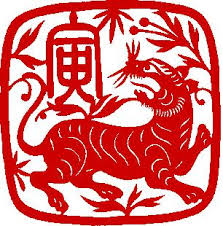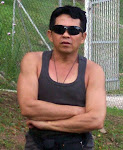


February 14, 2010 marks the start of the Year of the Tiger on the Chinese Lunar Calendar.
The message of FU  meaning Good Luck in Chinese. These banners are put up side down intentionally for this grand event of Chinese New Year.
meaning Good Luck in Chinese. These banners are put up side down intentionally for this grand event of Chinese New Year.
In China, the natives greet each other on the occasion Chinese New Year by wishing Guo Nian Hao, which means Happy New Year. This can be used in the first five days of the Chinese New Year Festival.
Some of the common forms greetings that Chinese greet each other with are: Gōngxǐ fācái; Hokkien Keong hee huat chye which means, "Congratulations and be successful”.Niánnián yǒuyú is a wish for excess and abundant harvests every year.A night before the beginning of the New Year, the children in every household is given money in a red pouch or paper. This is supposed to ward-off evil.
People have their own amiable way of wishing one anther Happy Chinese New Year.Some do it by exchanging good words, some by sending Chinese New Year greeting cards, Chinese New Year e-cards and Chinese New Year cards. Forwarding each with Chinese New Year wallpaper is another way of wishing each other good luck on the auspicious occasion.People over the country wear color Red, which supposedly keeps the evil spirit at bay.People over the country wear color Red, which supposedly keeps the evil spirit at bay.
People also invite their kith and kin over lunch and dinner and have a family reunion. During the Chinese New Year Eve and Chinese New Year Day the ancestors and deceased members of the family are prayed by the family to look over their well being.
 The Chinese Lion Dance has been both an unique and integral element of Chinese culture for over a thousand years. Wrapped up in various legends and folklores, the lion dance of China has some of the most fascinating stories related to its origin.
The Chinese Lion Dance has been both an unique and integral element of Chinese culture for over a thousand years. Wrapped up in various legends and folklores, the lion dance of China has some of the most fascinating stories related to its origin.
There are different myths about the origin of the lion dance but none of them have any real historical records. According to one of the legends many years ago there was a lion which appeared in a village and caused harm to the people and domestic animals. A Kung-Fu expert came to know of this and went into the forested mountain to fight with the lion. He fought with the lion on three occasions but was unable to win over it. So he trained some of the villagers in Kung-Fu with the intention to kill the lion. A few months later, they went up to the mountain again and killed the lion. The villagers, in order to rejoice this occasion of the victory over evil, followed the steps of those who fought with the lion and thus the much popular lion dance came into being. Another saying was that the King of China, the Ching of the Ching Dynasty had seen a lion dance in one of his dreams and he then ordered the guards of the palace to dance in accordance with what he had seen in his dreams after he woke up.
The lion in the dance is enacted by two dancers. One of the dancers handles the head, made out of strong yet light materials like paper-mache and bamboo. The other dancer plays the body and the tail under a cloth that is fixed to the head. The lion is attended by three musicians, playing cymbals, large drum and a gong. A Little Buddha teases it with a fan or a big ball. The head dancer can shift the lion's eyes, mouth and ears for different expression of moods. The lion dance is a perfect blend of art, history and kung fu moves. Normally the dancers are kung fu practitioners. Every kind of move in the dance has a specific musical rhythm. The music played is in the sync with the moves of the lion: the drum follows the lion where as the cymbals and the gong follows the drum player. Thus flamboyantly vivid and wickedly energetic, the brilliant lion dance bears witness to the vibrant richness of Chinese heritage.
“ Gōng xǐ fā cái “
“ Ang Pow Lai Lai “



No comments:
Post a Comment